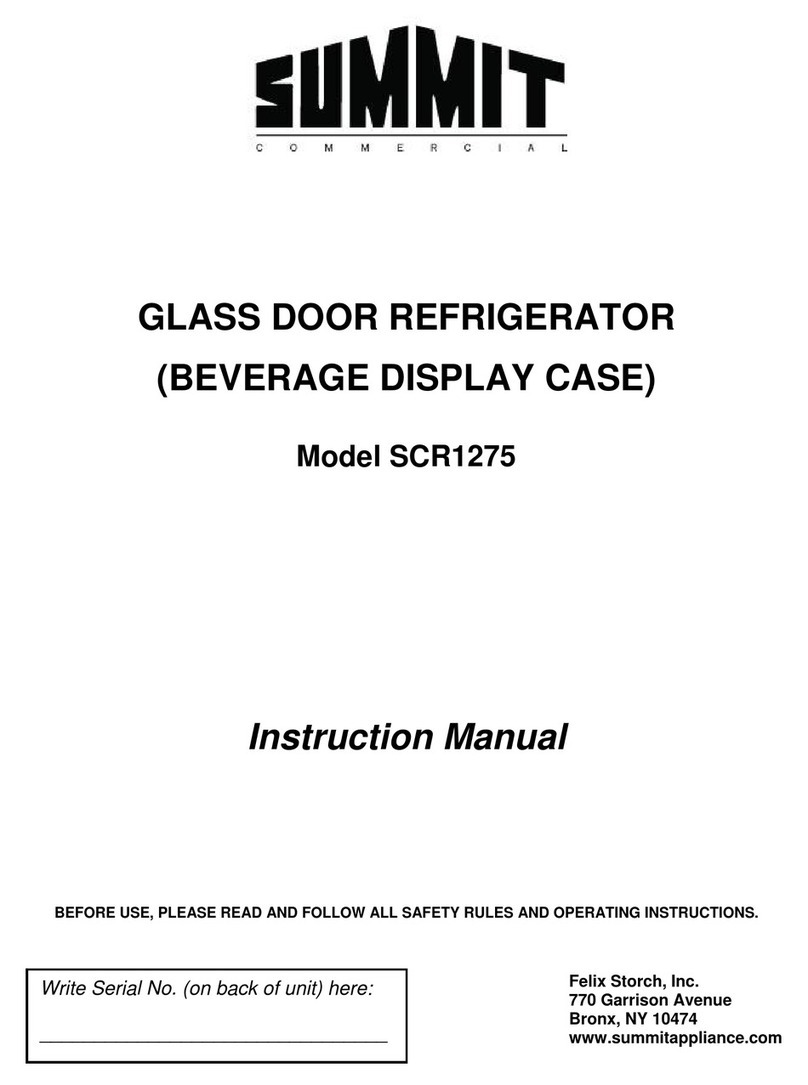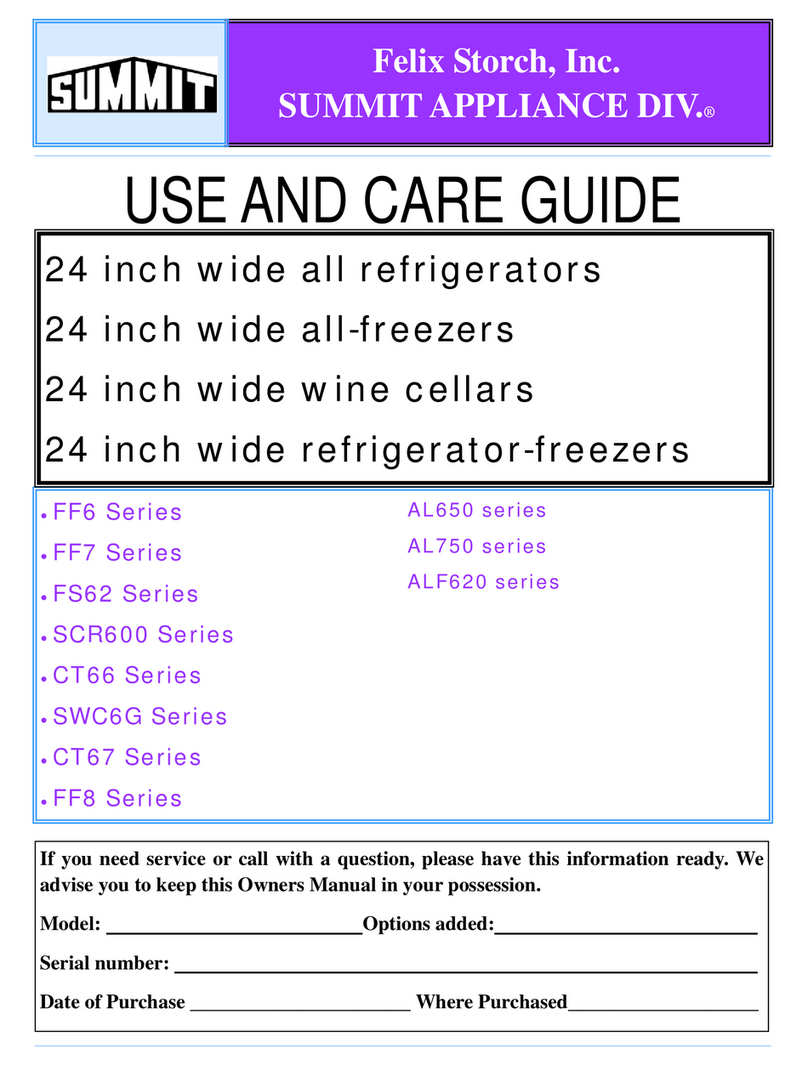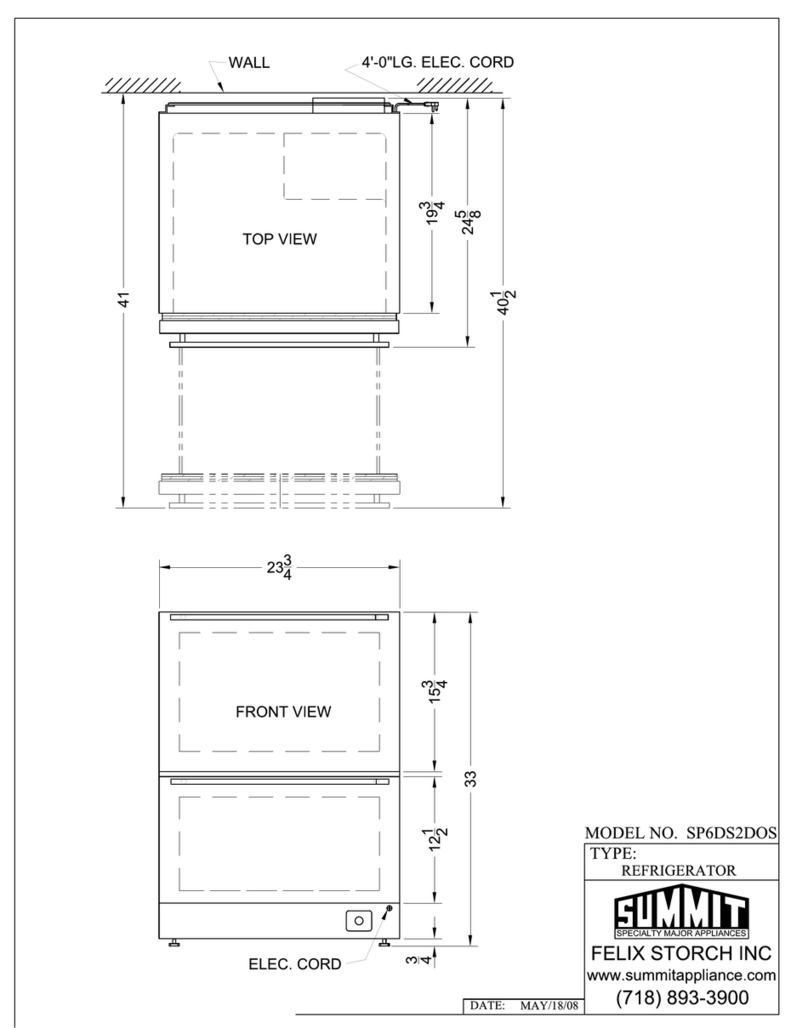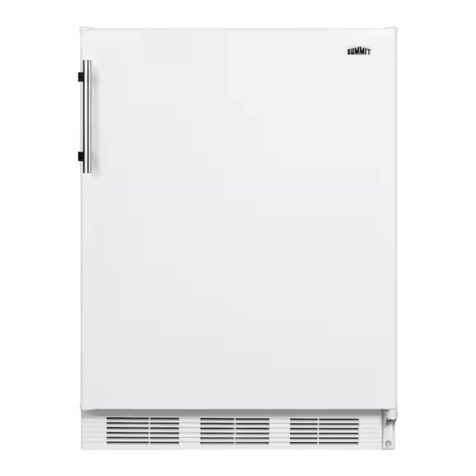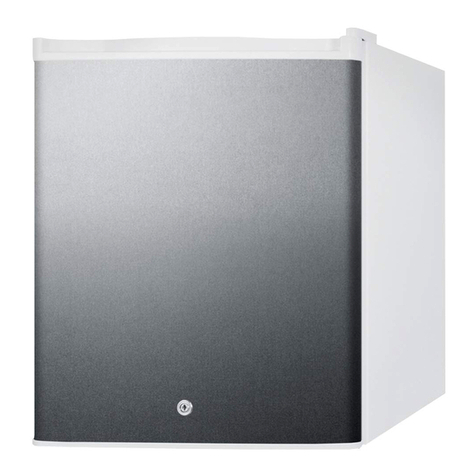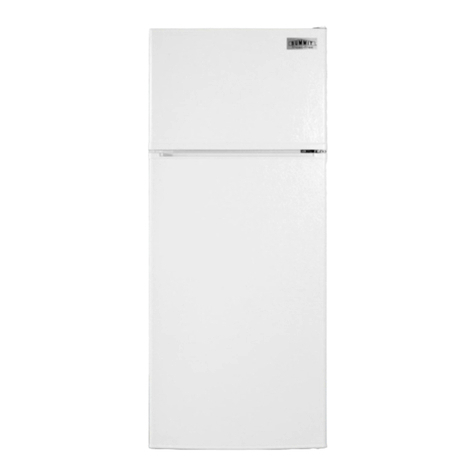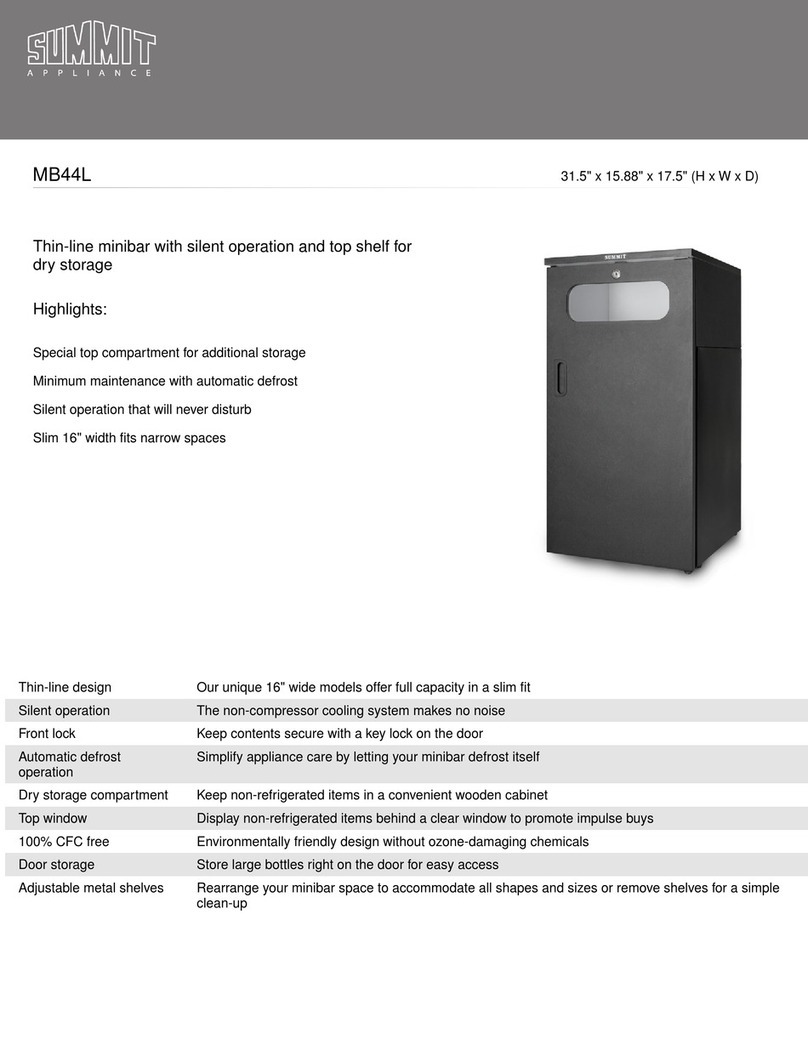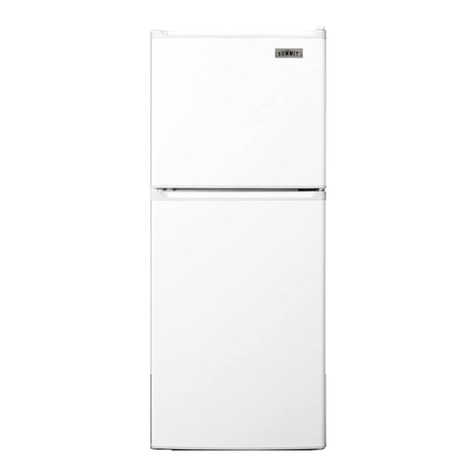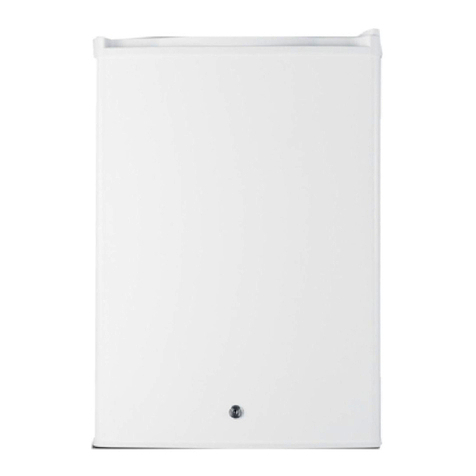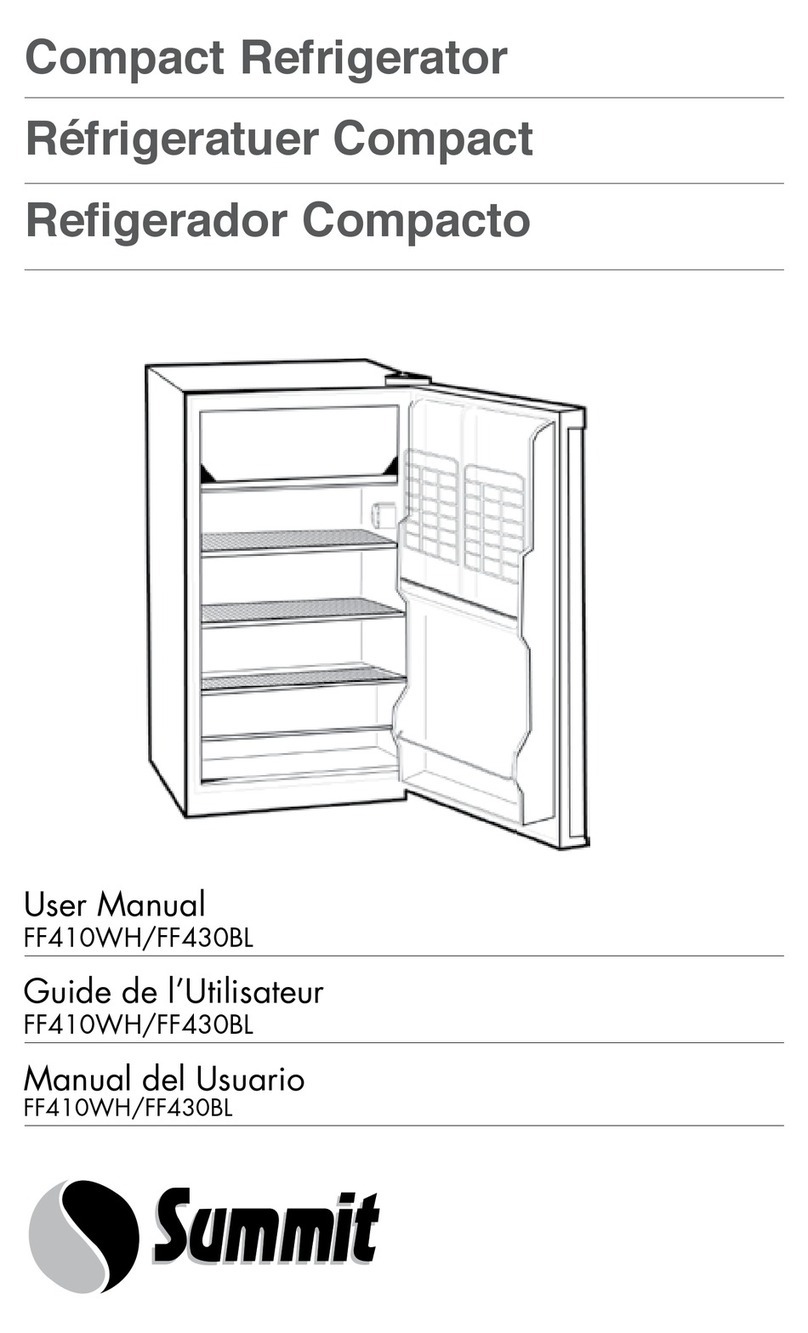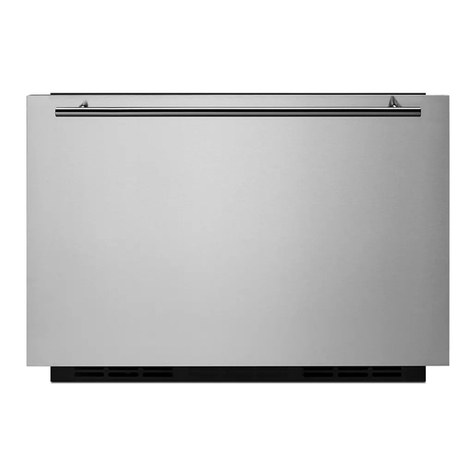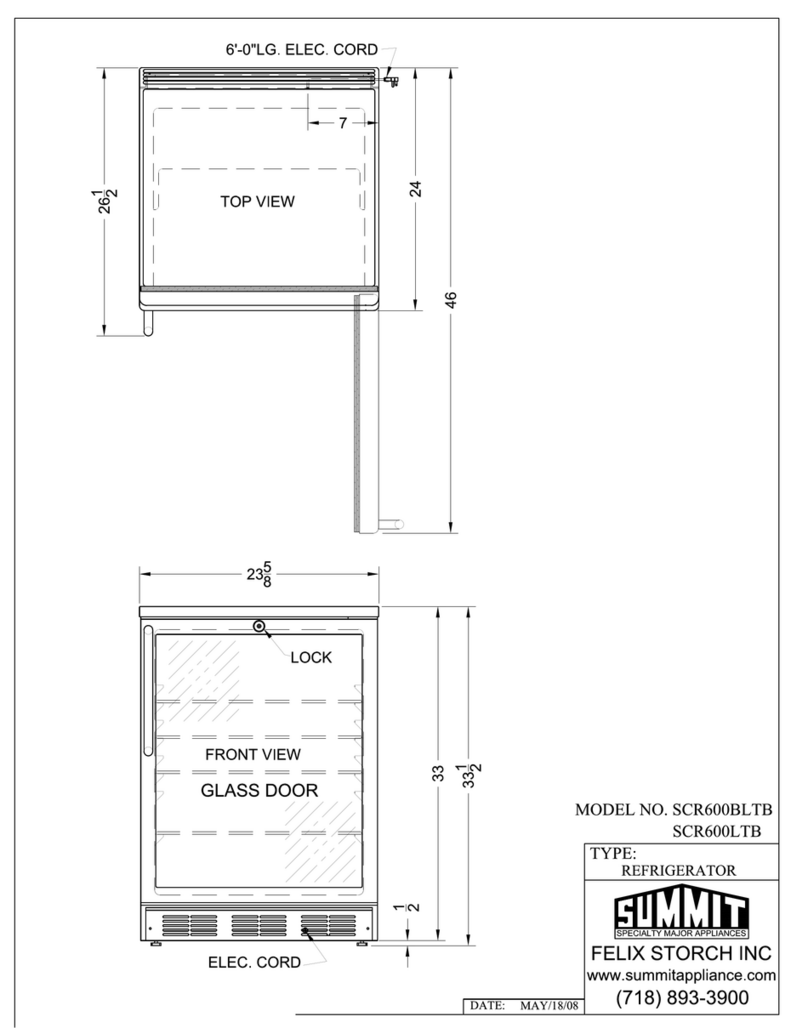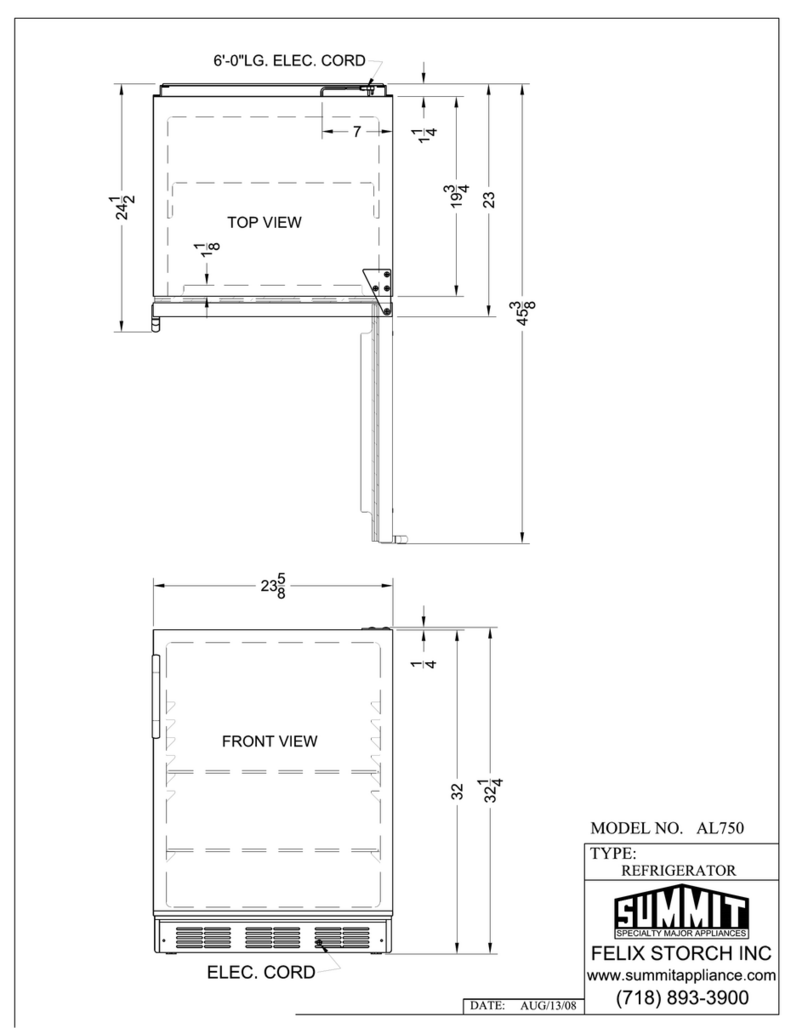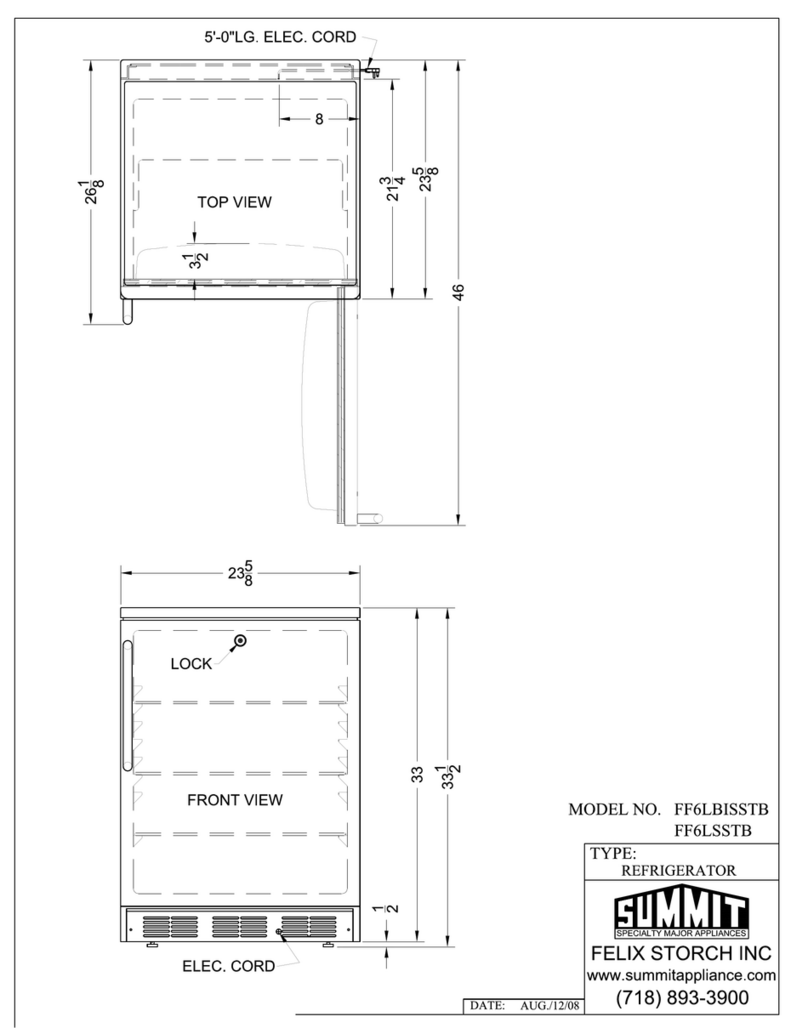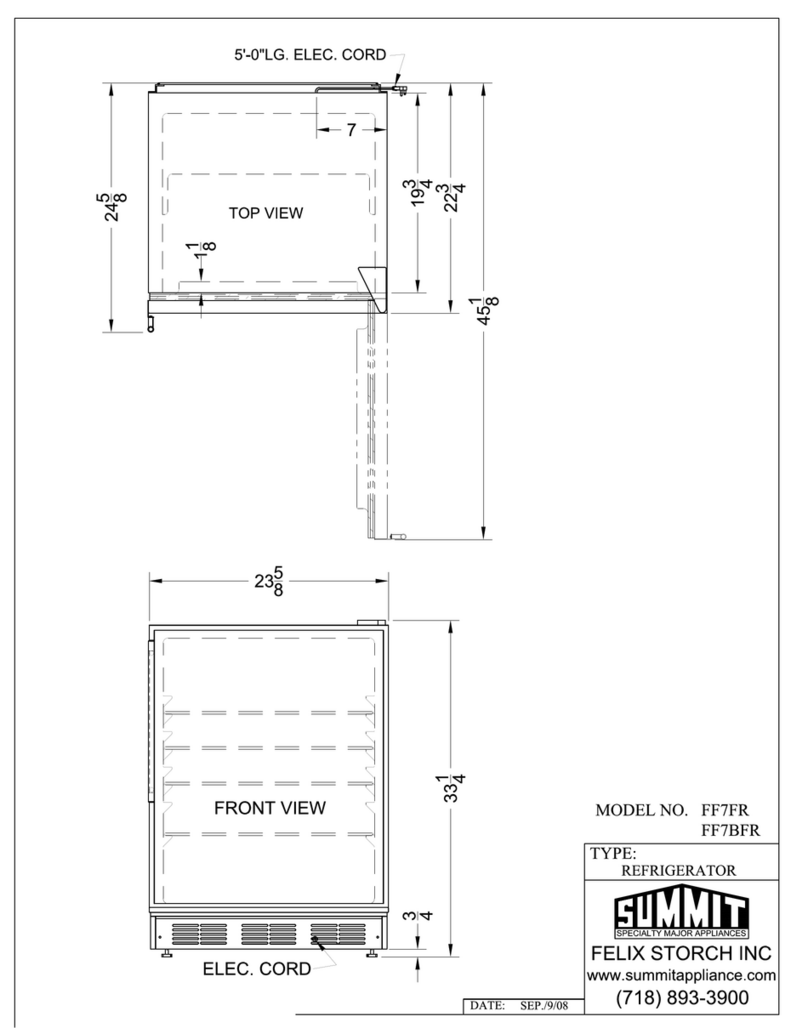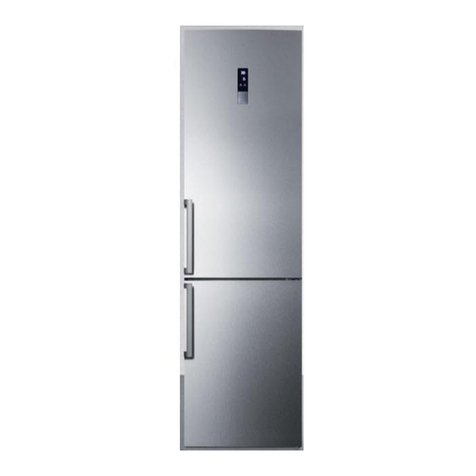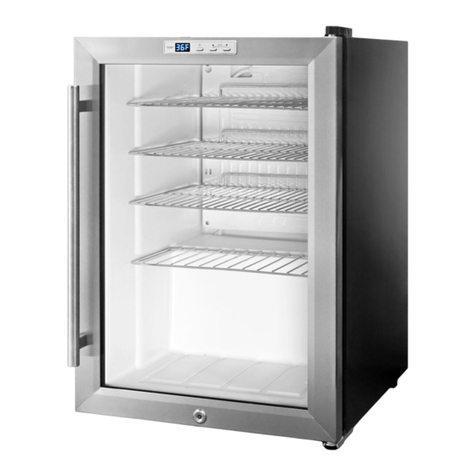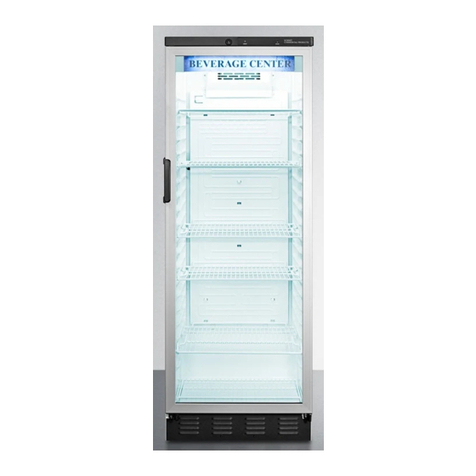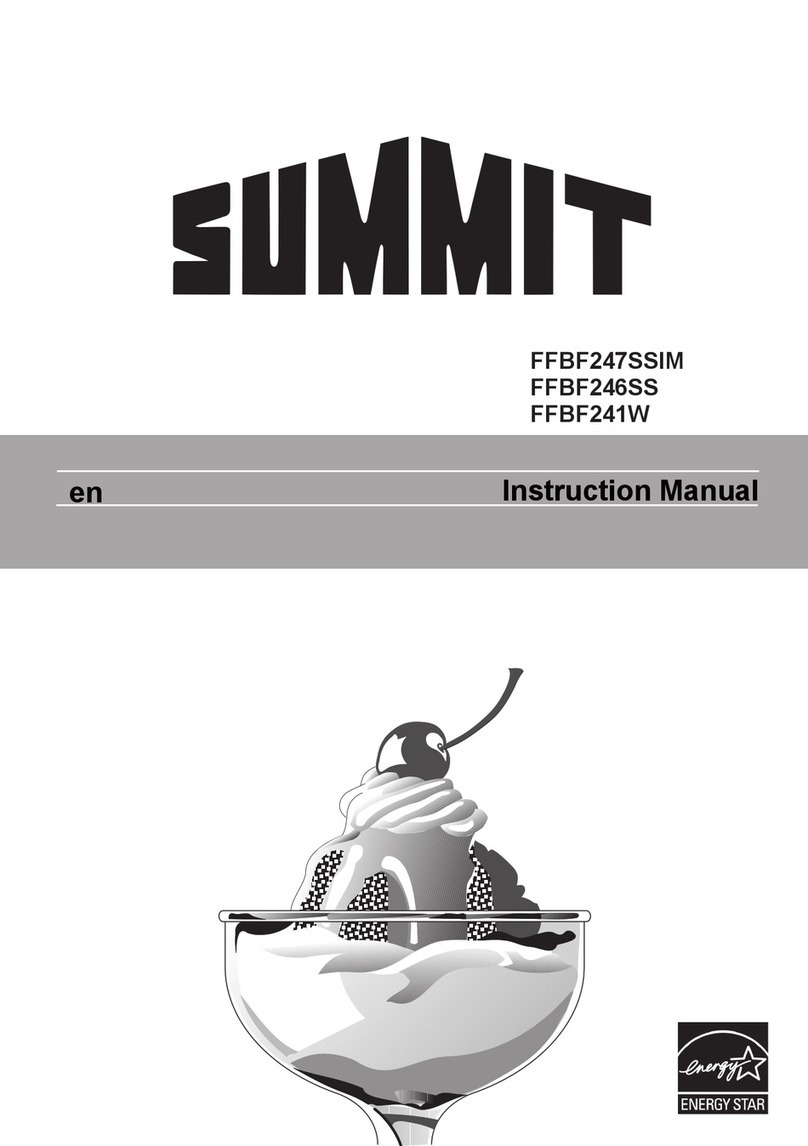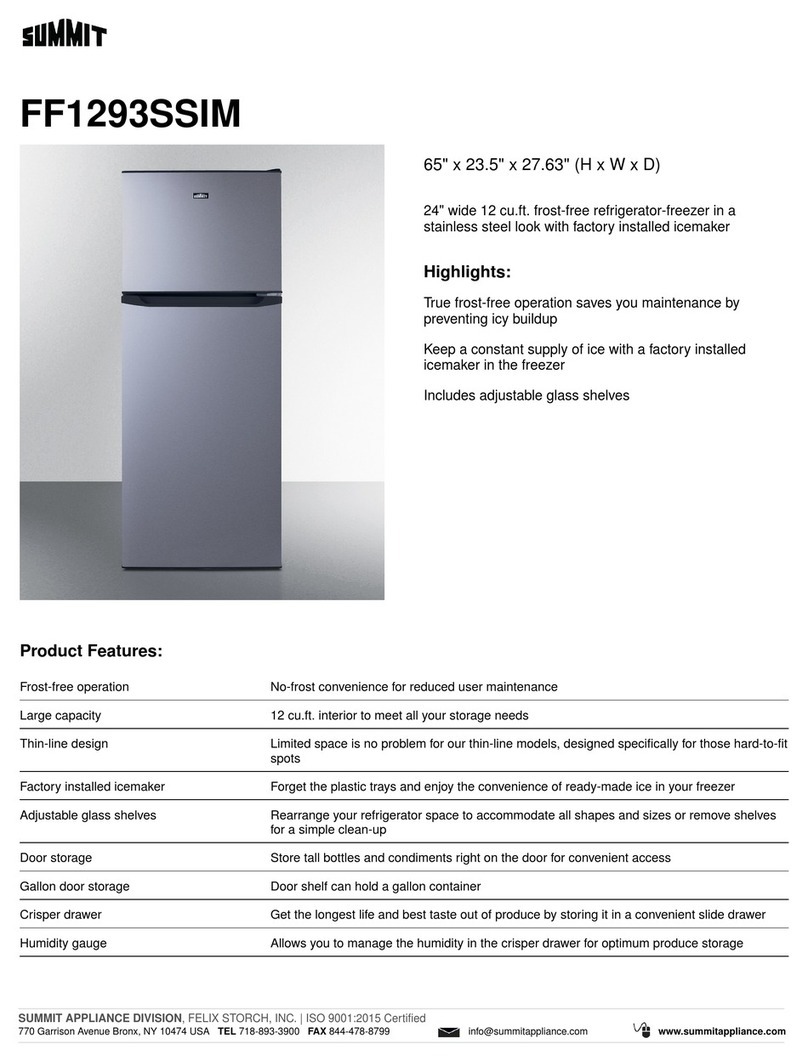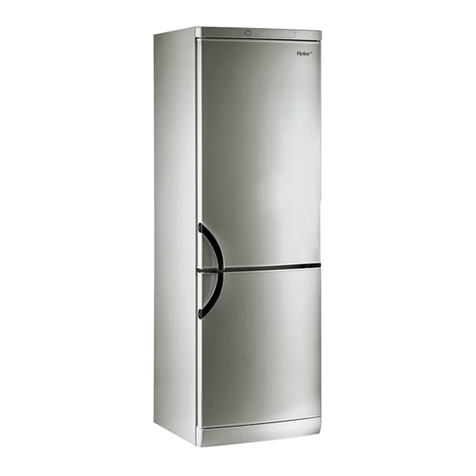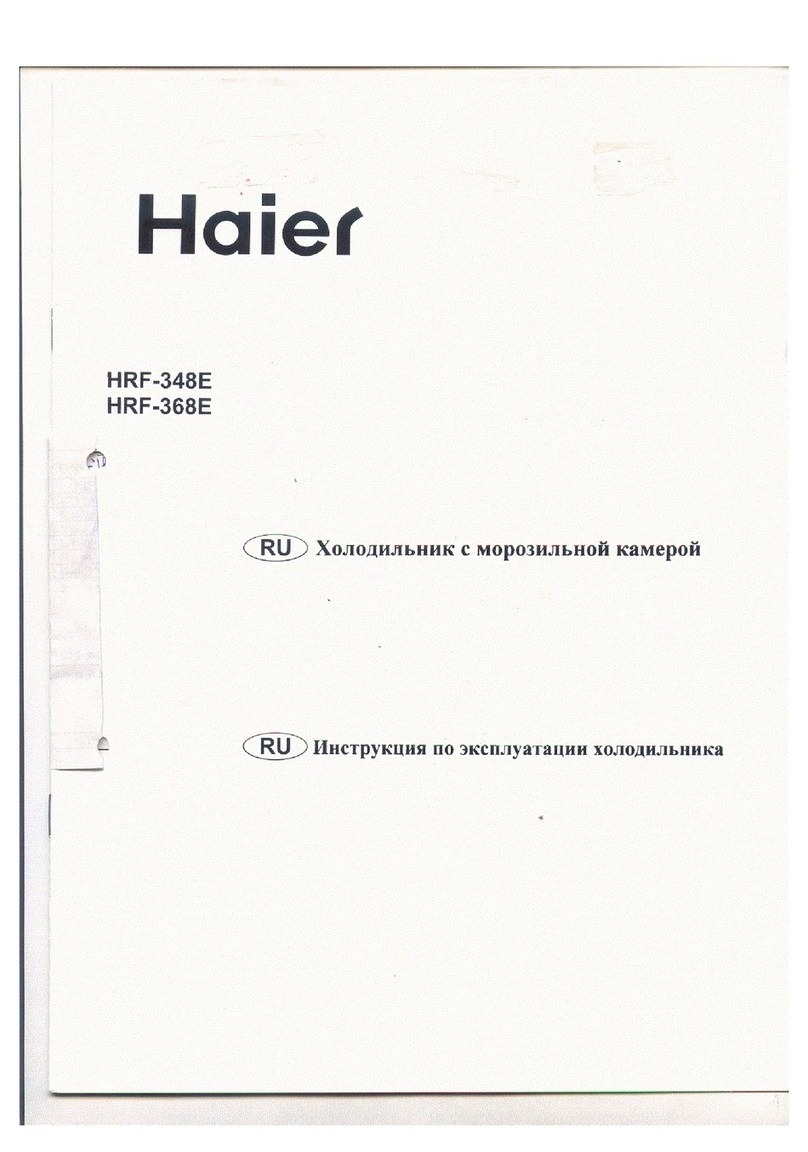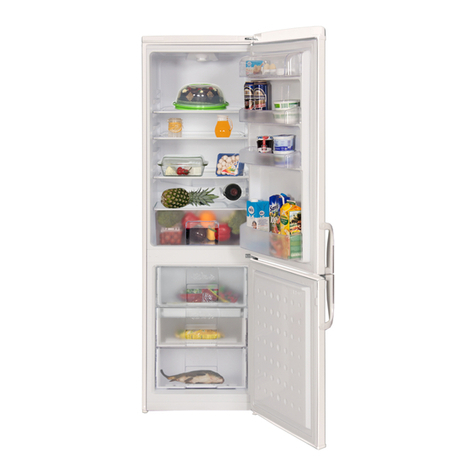
IMPORTANT SAFEGUARDS
Before the refrigerator is used, it must be properly positioned and
installed as described in this manual, so read the manual carefully.
To reduce the risk of fire, electrical shock or injury when using the
refrigerator, follow basic precautions, including the following:
Plug into a grounded 3-prong outlet, do not remove grounding prong, do not use an
adapter, and do not use an extension cord.
It is recommended that a separate circuit, serving only your refrigerator be provided. Use
receptacles that cannot be turned off by a switch or pull chain.
If the power cord is damaged, it must be replaced by the manufacturer, its service agent
or a similarly-qualified person in order to avoid an electrical hazard.
The power supply to the refrigerator must match the indicated power supply on the
nameplate. Otherwise the refrigerator will be damaged and the manufacturer's warranty
will be invalidated.
Do not place or use anything flammable, such as gasoline, gas cylinders, solvent-based
cleaning fluids, near the refrigerator due to the risk of fire. Substances with a high
percentage of alcohol must be stored in tightly sealed bottles or other containers and
should always be placed in an upright position.
Do not locate the refrigerator in a damp or wet environment or in a position where it is
likely to get splashed. Such an environment would weaken the electrical insulation or
expose live wires, possibly causing an electric shock or fire.
The refrigerator must be disconnected from its power source if it stops working or when it
is being cleaned or repaired.
To remove the plug from the socket, grasp the plug firmly and pull it out. Do not pull on
the cable. Do not connect the machine to electrical outlets while your hands are wet or
damp.
If a gas leak is discovered in the same room as the refrigerator, turn off the gas supply.
Do not open the refrigerator door and do not remove the plug from the main electrical
supply. A small spark resulting from such actions could cause a gas explosion. Open all
of the doors and windows in the room to disperse the gas.
Risk of child entrapment!
Child entrapment and suffocation are not problems of the past. Junked or abandoned
refrigerators are still dangerous, even if they will "just sit in the garage a few days."
Before you throw away your old refrigerator: Take off the doors. Leave the
shelves in place so that children may not easily climb inside.
Never allow children to operate, play with, or crawl inside the refrigerator.
2

